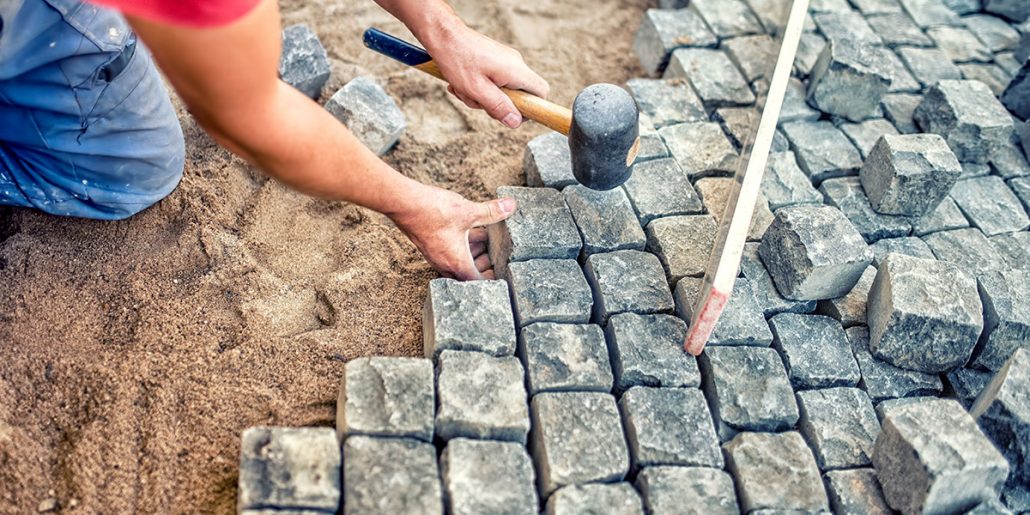Top-notch Roofing Contractor Services for Your Home
Unlocking the Tricks of Lasting Stonework Construction Practices for Eco-Friendly Structures
In the world of modern construction, the quest of lasting techniques has ended up being critical. Amongst the myriad strategies to environmentally friendly structure, lasting stonework construction stands apart as a tried and true and long lasting approach that holds a wealth of untapped capacity. From the selection of materials to innovative building methods, the tricks to accomplishing sustainability within stonework building and construction are complex and appealing. By discovering the advantages, products, strategies, and future fads of lasting stonework, a much deeper understanding of exactly how these techniques can form the future of environmentally friendly buildings emerges.
Benefits of Lasting Stonework Construction
Accepting lasting masonry construction methods not only reduces environmental influence but likewise uses long-term financial advantages to contractors and areas. By making use of materials like recycled bricks, obstructs, and rocks, builders can substantially decrease the carbon impact of their jobs while advertising resource performance. In addition, sustainable masonry building strategies, such as correct insulation and thermal mass properties, can enhance energy efficiency within buildings, resulting in minimized functional prices over time.
Furthermore, the longevity and resilience of stonework structures contribute to long-term economic benefits. Structures built using sustainable masonry practices usually require much less maintenance and repair work, translating to cost financial savings for contractors and property proprietors. The long life of stonework materials also ensures that frameworks continue to be secure and safe and secure, lowering the requirement for regular restorations or substitutes.
Eco-Friendly Masonry Materials
Using eco-friendly stonework products is a critical step in the direction of improving the sustainability of building practices and lessening environmental effect while optimizing long-lasting economic advantages. Sustainable stonework materials are sourced, generated, and made use of in a manner that reduces total environmental influence. Materials such as recycled blocks, recovered stone, and sustainable concrete blocks are coming to be progressively popular options for eco-conscious home builders. Recycled bricks, for instance, not only draw away waste from garbage dumps yet likewise call for less power to create contrasted to new bricks. Redeemed rock uses a distinct visual appeal while lowering the requirement for brand-new quarrying. Sustainable concrete obstructs integrate recycled accumulations and may include better insulation homes, adding to energy performance in structures.
Furthermore, natural materials like adobe, rammed earth, and straw bales offer excellent thermal mass residential or commercial properties, minimizing the demand for home heating and cooling down power. These products are often locally available, advertising regional economic situations and decreasing transportation-related carbon emissions. By selecting green stonework products, building and construction jobs can dramatically lower their ecological impact and add to the development of much healthier, much more sustainable built atmospheres.
Energy-Efficient Stonework Strategies
Power effectiveness plays a crucial role in enhancing the sustainability of stonework building and construction methods. By applying energy-efficient stonework methods, contractors can considerably reduce the total power consumption of a building, causing lower operational prices and a smaller environmental impact. One essential energy-efficient stonework method is the use of thermal mass, which includes incorporating thick materials like concrete or brick right into the building's framework to absorb and save heat. This helps manage interior temperatures, lowering the requirement for mechanical heating and cooling down systems.

Advancements in Lasting Stonework
Current innovations in sustainable masonry methods have actually brought around cutting-edge methods that are reshaping the building industry. One such advancement is the growth of self-healing concrete, which makes use of bacteria installed within the concrete to recover cracks autonomously. This development not only decreases maintenance prices yet likewise improves the longevity of stonework structures, adding to their sustainability.
Another notable innovation is the usage of recycled accumulations in masonry construction - masonry contractor. By incorporating products such as crushed ceramic waste or recycled glass into concrete blends, building contractors can lower the environmental impact of construction projects while keeping structural integrity. This technique not only draws away waste from garbage dumps but additionally saves natural deposits, making it a vital improvement in sustainable stonework building
In addition, the combination of digital style tools, such as Building Information Modeling (BIM), is changing the method stonework structures are i thought about this intended and built. BIM allows for even more precise computations, reduced product wastage, and enhanced energy performance, ultimately causing more lasting structure methods. These developments jointly signify an encouraging future for sustainable masonry building and construction in the age of environmentally friendly structures.
Future Trends in Stonework Sustainability
With the ingenious strides made in lasting masonry methods, the future fads in stonework sustainability are poised to more revolutionize the building and construction industry. One of the vital trends shaping helpful hints the future of stonework sustainability is the increased combination of modern technology. Advancements such as Building Info Modeling (BIM) and virtual reality simulations are being made use of to maximize masonry construction processes, bring about lowered material waste and improved energy effectiveness in structures.
In addition, the growth of unique sustainable materials is readied to play a significant function in improving the eco-friendliness of masonry building and construction. masonry contractor. Advancements like self-healing concrete, recycled aggregates, and bio-based binders are acquiring traction for their ability to decrease ecological influence while maintaining architectural integrity

Verdict
To conclude, sustainable masonry construction techniques use various advantages for green buildings. By making use of environment-friendly materials and energy-efficient methods, masonry can add to a much more sustainable developed environment. Technologies in sustainable stonework are constantly being developed to additionally enhance the ecological efficiency of structures. Looking towards the future, the fad of masonry sustainability is anticipated to grow, leading to more eco-friendly and energy-efficient construction methods in the years useful reference to come.